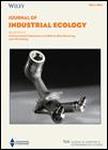版权所有:内蒙古大学图书馆 技术提供:维普资讯• 智图
内蒙古自治区呼和浩特市赛罕区大学西街235号 邮编: 010021

作者机构:Norwegian Univ Sci & Technol NTNU Ind Ecol Programme Dept Energy & Proc Engn Trondheim Norway Int Inst Appl Syst Anal IIASA Laxenburg Austria Polytech Montreal CIRAIG Montreal PQ Canada
出 版 物:《JOURNAL OF INDUSTRIAL ECOLOGY》 (J. Ind. Ecol.)
年 卷 期:2022年第26卷第5期
页 面:1616-1630页
核心收录:
学科分类:0830[工学-环境科学与工程(可授工学、理学、农学学位)] 08[工学]
基 金:Norwegian Research Council Young Scientists Summer Program(YSSP) at the International Institute for Applied Systems Analysis (IIASA), (Norwegian Research Council)
主 题:emerging technologies fleet modeling industrial ecology life cycle assessment mathematical programming transformation pathways
摘 要:Life cycle assessment (LCA) is a method to evaluate the environmental impacts of technologies from cradle to grave. However, LCAs are commonly defined in terms of the consumption of a single unit of a product and thus ignore scaling issues in large-scale deployment of technologies. Such product-level LCAs often do not consider capital manufacturing capacity and supply chain bottlenecks that may hinder the rapid, widespread uptake of emerging technologies entering the market;emerging technologies often require the expansion of existing supply chains or the development of entirely new supply chains, such as the manufacturing of novel materials. As a result, such LCA studies are limited in their ability to realistically assess impacts at the macro-scale and thus to guide large-scale decisions. In this work, we present ECOPT2, a generalized adaptable model that combines these constraints to the LCA approach using a mathematical programming approach and dynamic stock modeling. ECOPT2 combines LCA factors with transition scenarios from energy systems models to determine the environmentally optimal deployment of new technologies while accounting for material circularity constraints and barriers to uptake. We also introduce the structure of the software tool and demonstrate its features using a stylized vehicle electrification scenario.